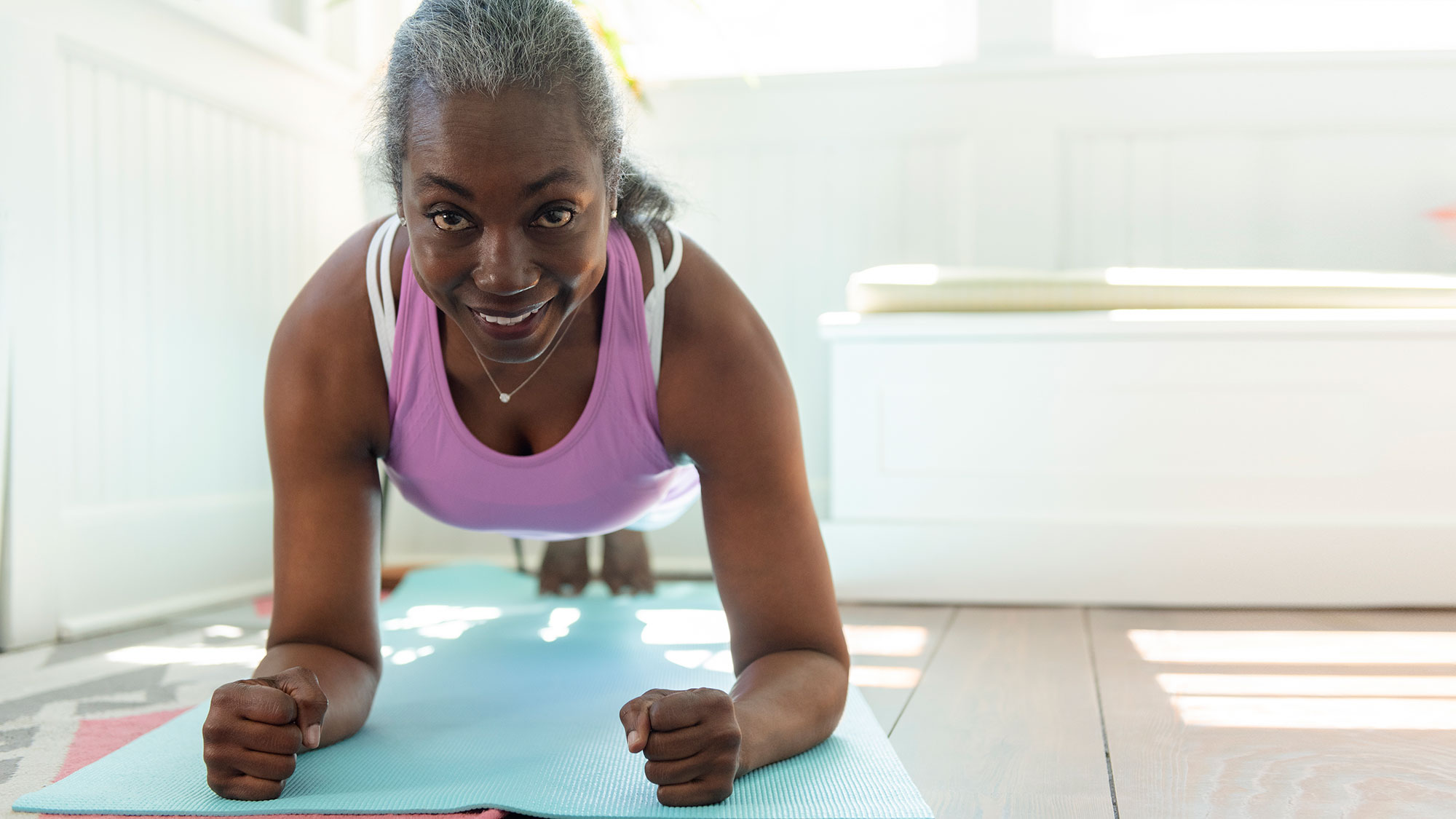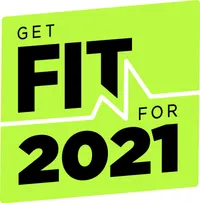
We’re living longer than ever, thanks to medical advances and increased awareness of healthy living. In the US, life expectancy increased from 69.9 years to 78.9 years between 1959 and 2016, whilst in the UK current average average life expectancy is 81.40 years.
This is great news - but what about the quality of those years? Will they be healthy and happy, or will they be blighted by ill health and regrets about not taking action earlier?
Globally, leading causes of death include coronary heart disease, stroke, lung conditions such as bronchitis and emphysema, and dementia - many of which are linked to lifestyle choices such as smoking, inactivity and poor diet, as well as factors such as family history.
Happily, making some relatively small, easy checks and changes now - based on facts, not fads - can make all the difference.
Dr Susan Rankine and registered dietician Nigel Denby treat and advise patients at WomanKind Healthcare. Below they reveal the simple steps you can take now to ensure that your later years are as happy and healthy as they are lengthy.
1. Monitor your blood pressure
Nearly half of American adults and one-third of British adults have high blood pressure (also known as hypertension), and many do not even realises it (only 24% have it under control in the US).
High blood pressure increases the risk of strokes, heart attacks and even dementia, but is easily controlled with simple changes to diet and lifestyle and with medications. The UK’s NHS recommends that all heathy adults over the age of 40 should have their blood pressure checked at least once every 5 years. This can be done at a doctor’s surgery, at select pharmacies, or via a home blood pressure testing kit.
Start your week with achievable workout ideas, health tips and wellbeing advice in your inbox.
2. Keep your cholesterol in check
Cholesterol is another thing that those over the age of 40 should get checked every five years. Your cholesterol numbers are used to predict your risk of heart disease, which accounts for one in every four deaths in the US. Just like blood pressure, there are no obvious signs of high cholesterol, so getting tested is key.
Cholesterol levels can often be controlled by changes to your diet and lifestyle – not everyone needs to take drugs to lower it. Check out our how to how to lower cholesterol for helpful tips and advice.
3. Attend cervical screenings
Cervical screening - also known as the smear test - checks for abnormal cells in and around the neck of the womb. Testing helps prevent cervical cancer, which affects around 14,000 American women and 3,000 British women each year. Most cases occur in women aged 35-40, although screening should begin from the age of 25 and continue until 65.
Nowadays, cervical screenings typically also test for Human Papiloma Virus (HPV), as this virus is nearly always the cause of cervical cancer. If HPV is detected, further testing and treatment will be arranged. The procedure itself typically takes less than five minutes, making it a simple - and essential - check that can potentially prevent a serious cancer.

4. Maintain a healthy weight
Measuring your waist is a good way to check you’re not carrying too much fat around your stomach, which can increase your risk of diabetes, cancer and heart disease. You can have a healthy BMI and still have excess tummy fat – meaning you’re still at risk of developing diseases.
Regardless of your age, height or BMI, you should try to lose weight if your waist is 94cm (37in) or more for men, and 80cm (31.5in) for women. If your waist circumference is a lot higher than the recommendations, don’t worry - it’s not hopeless. Even if you are very overweight, losing just 10% of your body weight can bring huge health benefits. Take a look at our guide on how to lose weight from your stomach to get started.
Need more help? Check out our other articles:
- How to lose weight over 50: expert approved advice
- How to lose weight by fasting: Intermittent fasting methods explained
- Menopausal weight gain: everything you need to know, including how to avoid it
5. Get enough omega-3s
Very few of us consume enough oily fish to get enough essential omega-3 fatty acids, which are linked to reducing the risk of heart disease, joint problems and supporting brain function. You only need to eat two servings of salmon, mackerel, sardine or other oily fish each week, so plan these into your weekly meals.
Don’t like (or, if you’re vegan, can’t eat) fish? Consider taking one of the best fish oil supplements, and check out our guide to omega-3 foods.
6. Take action on stress
Stress is a factor of modern life, as we juggle work, home, family and a host of other demands (including the delightful new addition of a global pandemic).
A degree of stress has been shown to be good for us, but for many, stress overload becomes a health issue, triggering problems such as insomnia, digestive issues and a weakened immune system. In the most serious cases, it can contribute to high blood pressure, high blood sugar and fertility problems.
Try to work stress-management practices into your day-to-day routine. Mindful activities can help; that might be a 10-minute meditation whilst enjoying the benefits of aromatherapy (try one of the best diffusers for essential oils), regular yoga sessions or a daily walk. Find what works for you and make it a priority.
7. Check your breasts regularly
Around one in eight women will develop breast cancer at some stage in their life, and one in five will be under 50.
A healthy lifestyle is key in reducing your risk, whilst early detection is the cornerstone of breast cancer survival. British women aren’t routinely offered breast cancer screening until the age of 47, so it’s vital that you get familiar with your breasts and regularly check for anything that doesn’t feel normal.
This includes unusual changes in shape or size, changes in skin color, changes to the shape or position of the nipple, puckering of the skin, lumps in the breast or armpit, nipple discharge and pain.
8. Eat well
It’s no secret that what you eat has a huge impact on health. It’s all too easy to bury your head in the sand and then get swept up in fad diets. The key to healthy eating is to just keep it simple – eat more fresh and less processed foods, drink enough water, and burn more than you consume. Even small changes can bring great rewards.
9. Eat regularly
Studies show that skipping meals almost guarantees you’ll over-eat later in the day. Ideally aim to eat every four hours until dinner - that means three meals plus two snacks.
If you’re keeping an eye on calories, the average woman should aim for around 1,700-2,000 calories a day. This breaks down as around 400-500 calories at breakfast and lunch, 600-700 calories at dinner, and two snacks of between 100 and 150 calories each. Men can up their total intake to 2,000 - 2,500 calories, although ideal intake varies depending on your age, metabolism and levels of physical activity.
10. Eat less salt
Despite years of health campaigns about the risks of too much sodium, most of us still eat at least a third more salt a day than is recommended. This can lead to health issues including increased risk of high blood pressure, heart disease and kidney problems.
Read labels on bread, cereals, sauces, stocks and smoked meats and cheeses to pick foods with less than 1.5g salt per 100g. And don’t get fooled into thinking sea salt, rock salt or salt alternatives are healthier – they all work in exactly the same way in your body.
Read more about why salt is bad for you and how to reduce your sodium intake in 7 easy steps.
11. Don’t cut carbs
Carbohydrates are not your enemy; they are the most efficient form of energy and your body needs them to perform normal daily activities. If you avoid carbs to try and manage your weight you’ll use up important muscle tissue, and ultimately slow down your metabolic rate - making you more prone to weight gain.
Instead of no carbs go for slow, low glycemic carbs like seeded breads, basmati rice, sweet potatoes, whole grains, oats and pasta, and have small amounts at each meal.

12. Eat the rainbow
The UK's National Diet and Nutrition Survey (NDNS) shows that more of us are getting closer to eating five portions of fruit and vegetables per day. The next step towards health is to eat a rainbow of different colored fruit and veg.
The pigment gives the bright colours to peppers, blueberries, spinach and butternut squash, and it’s the colours which provide the important antioxidants, bioflavonoids and polyphenols to help protect your body cells. The more colours you eat, the better the protection you get.
Healthy eating kitchen essentials:
- Best blenders: The top smoothie makers, juicers and food processors
- Best grill for perfectly grilled veggies
13. Asses your diabetes risk
More than 34 million Americans have diabetes, and the majority (90-95%) have type 2 diabetes. Meanwhile, in the UK 12.3 million are at risk of developing the latter disease.
If left unmanaged, diabetes leads to a plethora of horrible health problems, including heart disease and stroke. It’s often linked to poor diet and inactivity, and over half of type 2 cases could be prevented via simple lifestyle changes. Take the American Diabetes Association’s 60-second risk test to start making the necessary changes.
14. Limit your alcohol intake
Harmful drinking habits bring a range of increased health risks from several cancers, increased risks associated with being overweight, mental health issues and risk of injury.
The U.S. Dietary Guidelines for Americans recommends that alcohol be consumed in moderation —up to one drink per day for women and two drinks per day for men, whilst the UK guidelines advise both men and women not to drink more than 14 units per week.
If you regularly drink, aim to have at least three drink free days each week and follow the guidelines.
15. Move more - and regularly
Regular exercise is essential, but don’t fall into the trap of thinking that because you’ve done a HIIT class or weights session that you can spend the rest of the day slumped on the couch. Being active each and every day is essential.
As a minimum, aim to walk 10,000 steps every day - ideally from brisk walking. This is one of the most effective ways of balancing the calories you consume from food and the calories you burn. Plus if you’re overweight, it’s a great way to start your path to fitness - check out our walking to lose weight guide for more info.
You can track your steps with the help of a fitness band - helpfully, we’ve also compiled a guide to the best fitness trackers to help you pick the one for you.
Get Fit for 2021 with Fit&Well
As the sun rises on a brand new year, Fit&Well is here to help put last year behind you and make 2021 your happiest, healthiest yet. Here at fitandwell.com, we’ll be bringing you a wealth of workouts, diet plans and expert advice throughout January to help kick-start your health and fitness goals.
Launched in 2020, Fit&Well.com is all about helping you meet your health and fitness goals in ways that are fun and achievable. With news and features on fitness, weight loss, running, nutrition, yoga, wellness and more, we're committed to helping you wherever you are on your fitness journey. We break down the best fitness tech, with reviews, buying guides and the latest deals on fitness and wellness kit, from dumbbells to diffusers.
We cater for all difficulty levels here. It doesn't matter if you're a beginner in the world of fitness or you're gearing up for your tenth marathon: we're all moving towards the same goal – creating a healthier, happier you. From guides on getting started doing walks around the block, to creating the perfect work-from-home space, to eating to fuel your first triathlon. It's all here.


